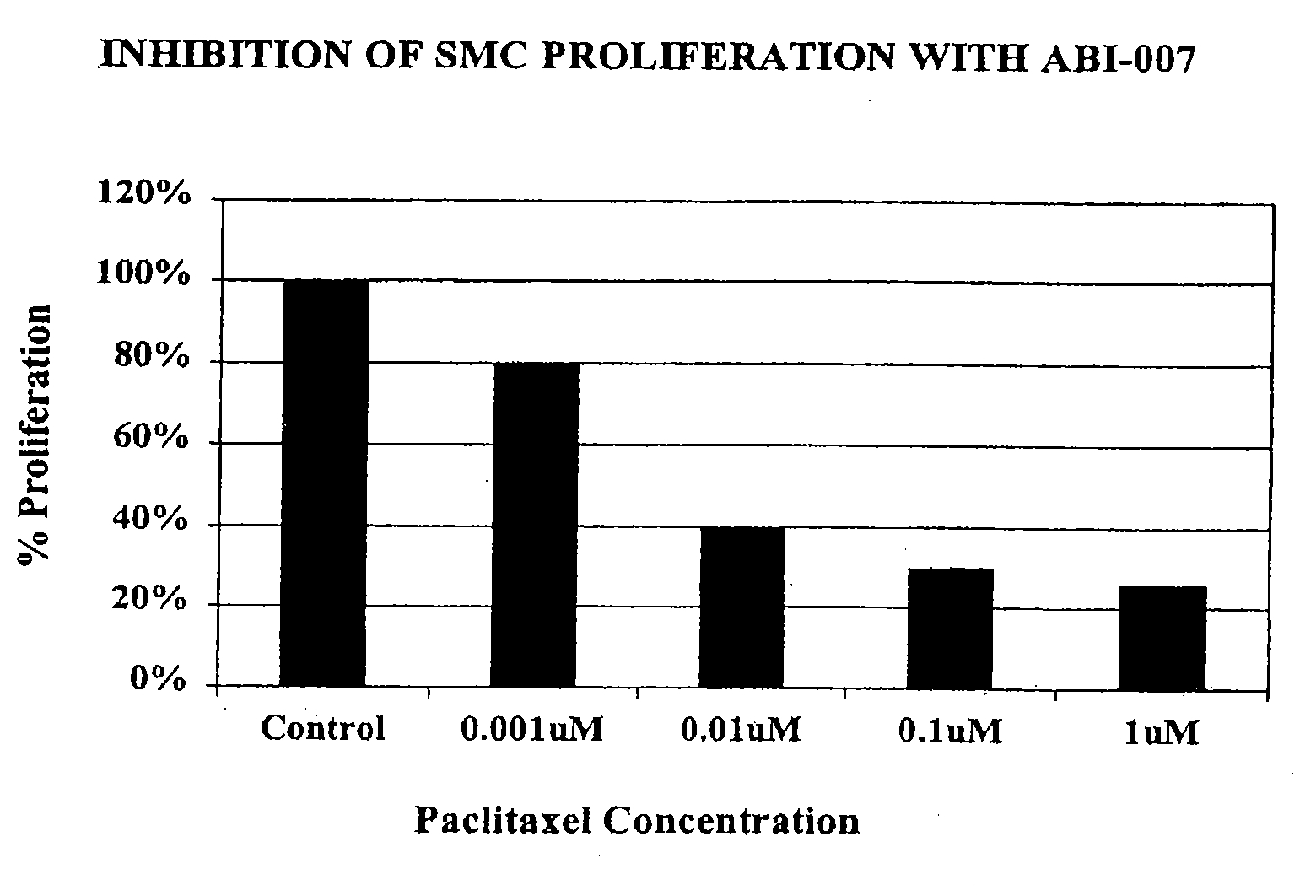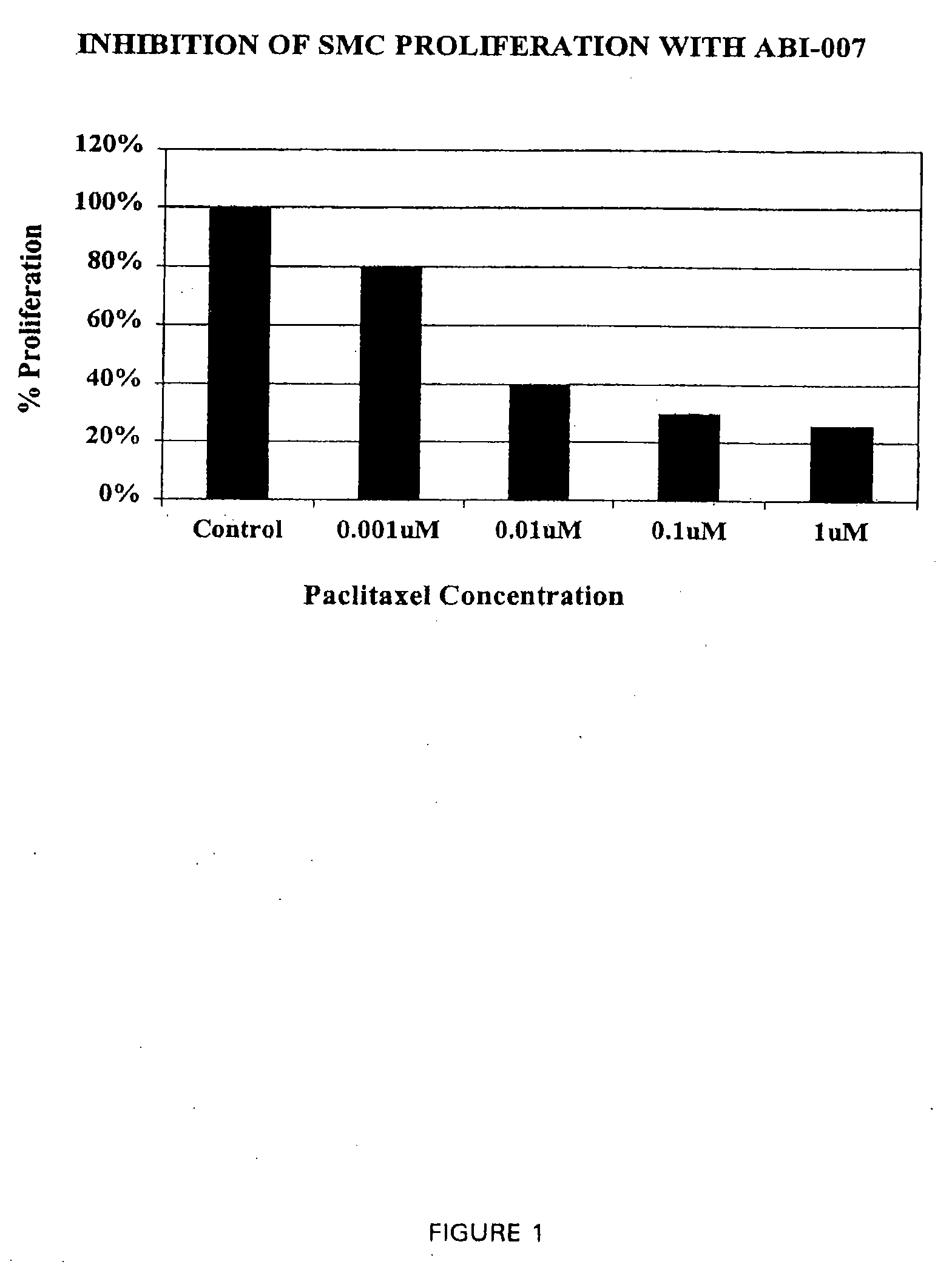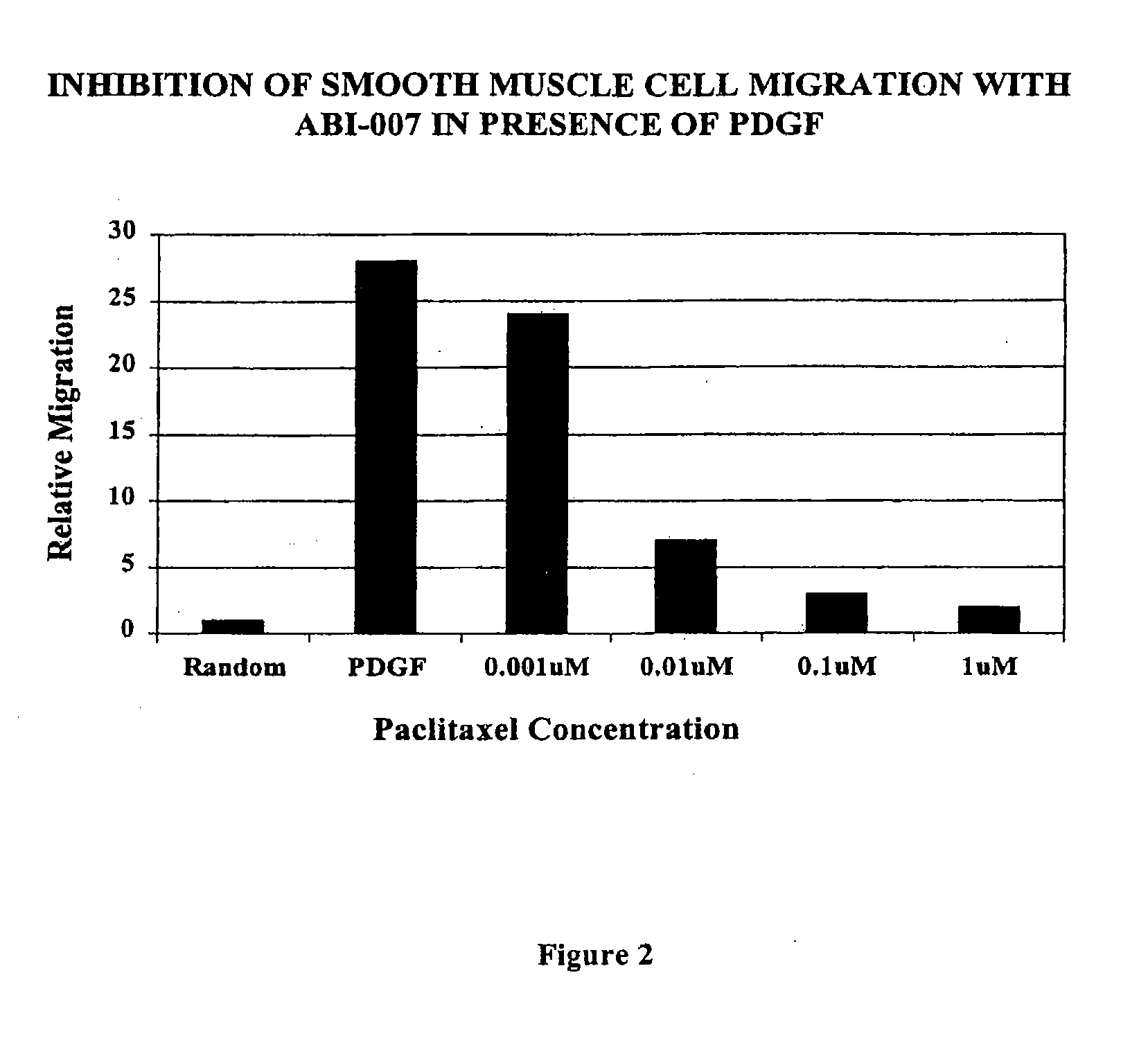Compositions and methods for treatment of hyperplasia
a hyperplasia and composition technology, applied in the field of compositions and peptides for drug compositions, can solve the problems of inability to sterile stenting, inability to stenting, and inability to stenting, so as to improve the sensitivity and safety of stenting, reduce the toxicity profile, and facilitate parenteral administration
- Summary
- Abstract
- Description
- Claims
- Application Information
AI Technical Summary
Benefits of technology
Problems solved by technology
Method used
Image
Examples
example 1
Effect of Paclitaxel Nanoparticles on Arterial Restenosis in Rats
[0064]Abnormal vascular smooth muscle proliferation (VSMP) is associated with cardiovascular disorders such as atherosclerosis, hypertension, and most endovascular procedures. Abnormal VSMP is a common complication of percutaneous transluminal coronary angioplasty (PTCA). The incidence of chronic restenosis resulting from VSMP following PTCA has been reported to be as high as 40-50% within 3-6 months.
[0065]The high incidence of vascular reocclusion associated with PTCA has led to development of in vivo animal model of restenosis and the search for agents to prevent it. The following study describes the use of Capxol™ in inhibiting restenosis following intimal trauma of the artery.
[0066]Male Sprague-Dawley Rats (Charles River) weighing 350-400 gm are anesthetized with Ketamin and Rompun and the right common carotid artery is exposed for a distance of 3.0 cm. The adherent tissue is cleared to allow two DIETRICH micro bul...
example 2
Systemic Delivery of Nanoparticle Paclitaxel (ABI-007) in a Rabbit Model of In-Stent Restenosis
[0073]This study was designed to examine a novel formulation of systemic paclitaxel (ABI-007, American BioScience, CA.) on in-stent restenosis in rabbit iliac arteries. Paciltaxel exerts its effect by preventing the depolymerization of microtubules. Although the anti-proliferative effects of this drug are well documented, it has been known to delay healing in arterial injury models, especially with local delivery. It is thought that a systemic formulation of paclitaxel would allow steady control of drug levels and repeat dosing, potentially minimizing its effects on healing. To date, information on systemic delivery of paclitaxel in rabbits is limited, published toxicity studies have mostly been restricted to the rat. The study was conducted in three phases: 1) in-vitro assays of smooth muscle cell proliferation and migration (see Examples 3-5); 2) pharmacokinetics (see Example 6); and 3) ...
example 3
In-Vitro Tissue Cultures to Establish Dose (Inhibition of SMC Proliferation & Migration)
[0074]Smooth muscle cells (SMCs) isolated from the medial layer of the aorta from 3 male adult donor rabbits were cultured in M 199 supplemented with 10% Fetal Bovine Serum (FBS) and 100u / ml of penicillin and streptomycin. The cells were grown to confluence in 5% CO2 / 95% air at 37° and used for proliferation and migration assays.
PUM
| Property | Measurement | Unit |
|---|---|---|
| diameter | aaaaa | aaaaa |
| time | aaaaa | aaaaa |
| time | aaaaa | aaaaa |
Abstract
Description
Claims
Application Information
 Login to View More
Login to View More - R&D
- Intellectual Property
- Life Sciences
- Materials
- Tech Scout
- Unparalleled Data Quality
- Higher Quality Content
- 60% Fewer Hallucinations
Browse by: Latest US Patents, China's latest patents, Technical Efficacy Thesaurus, Application Domain, Technology Topic, Popular Technical Reports.
© 2025 PatSnap. All rights reserved.Legal|Privacy policy|Modern Slavery Act Transparency Statement|Sitemap|About US| Contact US: help@patsnap.com



